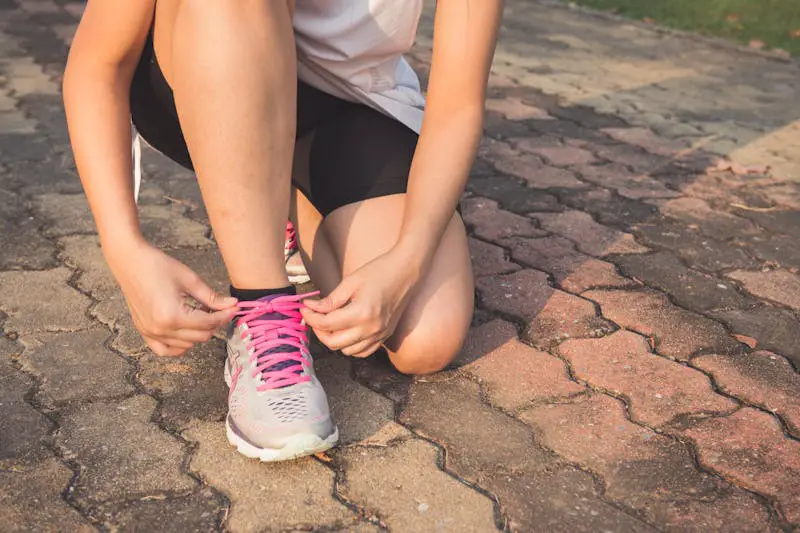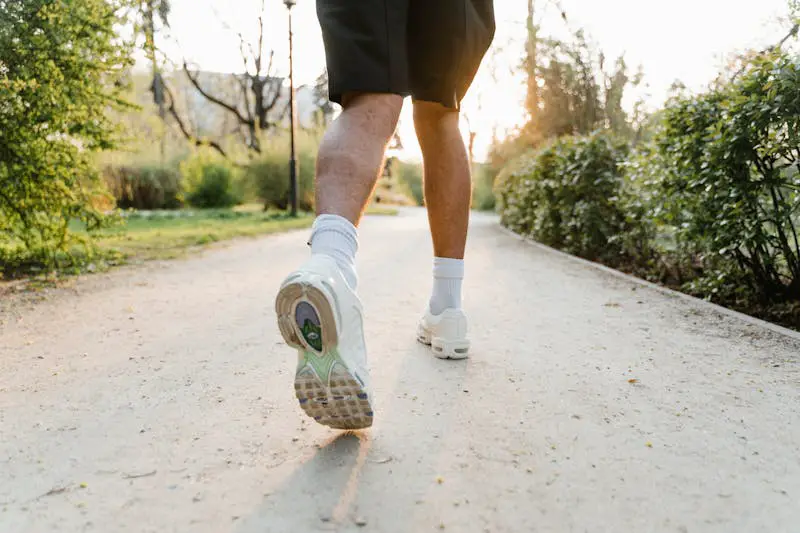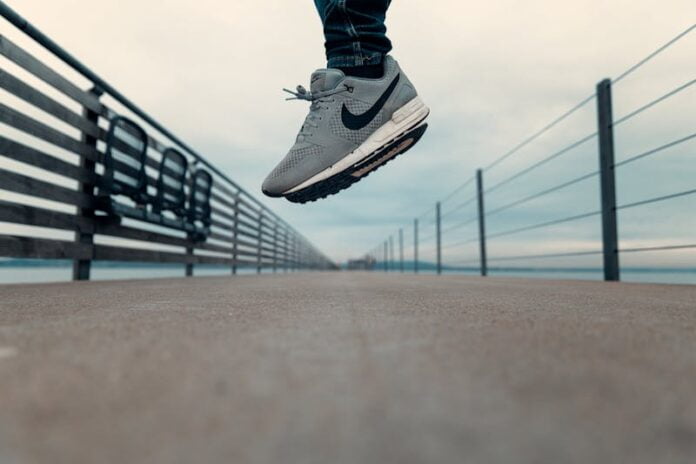Running shoes designed for concrete surfaces enhance durability and cushioning. Choosing the right running shoes on concrete is essential, as the hard surface can quickly wear down the soles and put extra stress on your feet and joints.
Runners often face the challenge of finding footwear that balances longevity with comfort when constantly pounding on such unforgiving terrain.
The best running shoes for concrete have ample cushioning to absorb shock, a robust outsole to resist abrasion, and a comfortable fit to prevent blisters and other injuries. Selecting a pair that meets these criteria can significantly improve your running experience on concrete, reduce injury risk, and potentially improve your performance by ensuring proper support and energy return with each stride.

The Unique Challenge Of Concrete
Running shoes on concrete face a tough test. Concrete’s hardness challenges your body. Each step on concrete sends a sharp jolt through our legs. This shock can hurt joints and muscles. Experts say concrete is unforgiving to runners. Your shoes must cushion well.
Concrete and asphalt are not the same. Asphalt is softer than concrete. It’s kinder to your body when you run. But both can be rough on shoes. Good shoes reduce the impact. They help protect your knees and ankles. Always choose shoes with good support for hard surfaces.
Anatomy Of A Running Shoe
The anatomy of a running shoe is complex. Advanced cushioning technologies play a crucial role. Brands often use proprietary foams or gels. These materials absorb shock from concrete surfaces. They help protect runners’ joints and muscles.

Material choices for durability are also key. Durable rubber soles resist wear and tear. Synthetic fabrics in the upper shoe withstand repeated use. Mesh panels offer breathability and reduce moisture. All these features help shoes last longer.
| Part of Shoe | Material | Function |
| Midsole | Foam/Gel | Shock Absorption |
| Outsole | High-abrasion Rubber | Durability |
| Upper | Synthetic Fabrics | Longevity & Comfort |
- Memory foam adapts to a runner’s foot.
- Air-cushioned soles offer extra bounce and support.
- Energy-returning boosts provide a push with each step.
Selecting The Right Running Shoes on Concrete
Choosing the right running shoes on concrete requires attention to certain features. Cushioning is vital for absorbing impact. Look for shoes with thick soles and ample arch support to prevent injuries. The outsole material should be durable to withstand the hard surface. Breathability is also important to keep feet cool during long runs.
| Brand | Model | Key Feature |
| ASICS | Gel-Kayano | High cushioning |
| Adidas | UltraBoost | Responsive midsole |
| Nike | Air Zoom Pegasus | Durable outsole |
| Brooks | Glycerin | Plush fit |
| Hoka One One | Bondi | Maximum cushioning |
Proper Running Technique On Hard Surfaces
Maintaining a correct stride and posture is key while running on concrete. Keep your back straight and shoulders relaxed. Short, quick strides are better than long ones. This method helps reduce the impact on your joints.
Foot strike plays a crucial role in effective running. Landing on the middle of your foot is best. This technique prevents injuries and improves stability. Always wear shoes that support this type of landing.
Training Tips For Concrete Runners
Running on concrete demands smart training strategies. Mix hard surfaces with softer ones like tracks or treadmills. This balance helps protect your joints from the harsh impact of concrete. It also reduces injury risk. Aim to run on grass or trails for part of your training. These surfaces are kinder to your body.
Cross-training is also key for concrete runners. Engage in activities like swimming or cycling. They keep your fitness levels high while giving your legs a break from the pavement. Always include strength training exercises. They build muscles that support your running. Remember, a mix of activities can boost overall performance.
Injury Prevention And Recovery
Running on concrete can lead to specific injuries. Stress fractures, shin splints, and runner’s knee are common. To prevent these, proper footwear is crucial. Shoes should provide cushioning and support.
For those already facing injuries, rest is key. Ice can reduce swelling. Compression aids in supporting injured areas. Elevation helps with fluid reduction. Tools like foam rollers or massage guns may assist in muscle recovery. Seek a professional for persistent pain.
Maintaining Your Running Shoes
Knowing when to replace your running shoes is crucial for your feet’s health. Track your mileage – shoes usually last between 300-500 miles. Inspect them for wear and tear, focusing on the sole and cushioning. Changes in comfort and support often signal it’s time for new shoes.
Care tips to extend the life of your shoes include cleaning them regularly. Use mild soap and cold water. Avoid the washing machine, as it can damage them. Always air dry your shoes, away from direct heat, to prevent the materials from breaking down.
Frequently Asked Questions
Are Running Shoes Good For Concrete?
Running shoes can be suitable for concrete, as they often provide cushioning and support to absorb the hard surface’s impact. It’s important to choose a pair designed for road running to ensure durability and comfort.
What Are The Best Running Shoes For Sidewalks?
The best running shoes for sidewalks offer cushioning and durability. Popular choices include the Nike Air Zoom Pegasus, Adidas UltraBoost, and Brooks Ghost series. These provide support and comfort for hard surfaces.
What Are The Most Comfortable Shoes To Wear On Concrete?
The most comfortable shoes for walking on concrete are those with ample cushioning, arch support, and shock absorption. Brands like New Balance, ASICS, and Skechers offer specialized footwear designed for hard surfaces.
What Shoes To Wear Playing On Concrete Floor?
For playing on concrete, choose shoes with ample cushioning, durable outsoles, and good ankle support to prevent injuries and provide comfort.
Conclusion
Choosing the right running shoes for concrete surfaces can significantly enhance your running experience and reduce injury risks. Opt for shoes with ample cushioning and support to protect your joints and muscles. Remember, the perfect pair can be a game-changer for your pavement runs, boosting both comfort and performance.
Happy running!


